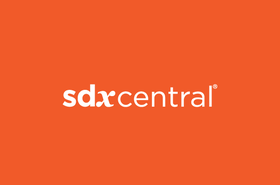Broadcom’s unwavering ability to convert VMware’s largest legacy customers to its subscription pricing model continued unabated during its most recent fiscal quarter, which along with surging artificial intelligence (AI)-related revenues boosted overall revenues 20 percent year-over-year.
Broadcom CEO Hock Tan said the vendor had converted more than 87 percent of VMware’s 10,000 largest customers to the new subscription pricing model by the end of its fiscal second quarter of 2025. That growth was a substantial gain over the approximately 70-percent conversion rate it reported at the end of the previous quarter.
Tan added that the renewal process would likely take several more quarters as it works through contracts signed just before Broadcom closed on the VMware acquisition in late 2023.
“Most of our VMware contracts are typically three years, and that was what VMware did before we acquired them, and that's pretty much what we continue to do. Three is very traditional,” Tan said. “Based on that, the renewals, we’re like two-thirds of the way … through the renewals, so we probably have at least another year-plus, maybe a year-and-a-half to go.”
Analysts have noted that some legacy VMware customers have deep platform integrations that make it difficult to move, and that some have signed up for Broadcom’s new license and pricing models in an attempt to gain more time to figure out if a move is worthwhile.
Broadcom unfazed by VMware concerns
Tan’s timeline aligns with what rivals are seeing in the market as they scramble to steal customers looking to shift away from VMware.
Nutanix CEO Rajiv Ramaswami had previously stated many legacy VMware customers signed up for new contracts ahead of the Broadcom closing due to concerns over pricing and license structures that eventually came to fruition. Despite the delay, Nutanix has managed to steal hundreds of disgruntled VMware customers.
And thousands more could be available.
Equity research firm William Blair in a recent Nutanix report mentioned that market research firms were predicting up to 30% of VMware’s installed base of more than 400,000 customers “will eventually switch away from VMware.”
Broadcom remains unfazed by this challenge and had made recent moves to focus in more heavily on the larger, more entrenched VMware customers. This was highlighted earlier this month when it announced the latest revamp to its VCF reseller partner program.
Brian Moats, SVP for global commercial sales and partners at Broadcom, wrote in a blog post that those change will see Broadcom ditching the program’s lowest tier in a number of regions so that it can focus sales through “those partners who are committed to delivering the transformative customer experience around VMware solutions, as demonstrated by their historical performance levels, technical and other relevant expertise, and ability to make the investments necessary to offer customers the levels of service they expect and deserve.”
Moats also wrote that Broadcom was “raising the bar” on the remaining tiers. This includes Pinnacle partners being required to be part of an advanced deployment and support program; Pinnacle and Premier partners must maintain dedicated sales and technical resources, and work directly with VMware on product delivery and support; that all remaining partners maintain “active and in good standing” or risk being cast aside.
“As we streamline our partner ecosystem, some customers will need to transition to a new partner relationship. That’s why the partners selected to move forward with Broadcom will carry a greater responsibility and a higher standard of performance,” Moats explained. “We’re entrusting this focused group with a broader set of customers and, in return, expect them to lead with excellence, operate at scale, and deliver real impact on the journey to a modern private cloud.”
Tan reiterated that progress by forecasting a 16-percent year-over-year increase in infrastructure software revenues for the current quarter, pushing that forecast to $6.7 billion.
Future M&A and AI
Tan did appear more open to future merger and acquisition activity, but with a big-ticket caveat.
“Well, the kind of M&A we will do, in our view, would be significant. Would be substantial enough that we need debt in any case,” Tan said. “It's a good use of a free cash flow to bring down debt to in a way expand, if not preserve, our borrowing capacity if we have to do another M&A deal.”
Broadcom had reportedly been in talks to acquire a portion of beleaguered chip giant Intel. Those reports suggested Broadcom would acquire Intel’s chip-design business and that Taiwan Semiconductor Manufacturing Co. (TSMC) might purchase Intel’s production facilities.
That rumored move could bolster Broadcom’s growing AI opportunities, which also continue to grow.
Revenues tied to AI semiconductors increased 46 percent year-over-year to $4.4 billion in the quarter. AI-related networking revenues surged a staggering 170 percent year-over-year and accounted for 40 percent of Broadcom’s total AI revenues.
Tan said he views customers as maintaining their AI-related investment appetite “despite the uncertain economic environment. In fact, what we've seen recently is that they are doubling down on inference in order to monetize their platforms. And reflecting this, we may actually see an acceleration of demand into the back half of 2026 to meet urgent demand for inference.”
Broadcom this week further fueled that opportunity with the release of its latest Tomahawk 6 switch series networking chip that is targeted at large AI clusters. Broadcom claims the new series is the first to deliver 102.4 Tb/s of switching capacity in a single chip, double the bandwidth of any Ethernet switch currently available.
William Blair noted in a report earlier this year that Broadcom supplies custom chips to Google, Meta, and Bytedance, and also noted that Broadcom hinted at a pair of new hyperscale customers it was working through a validation process with that the analyst firm suspects are OpenAI and Apple.
“Altogether, Broadcom’s commentary on its AI opportunity with customers was a positive reinforcement for our AI thesis, highlighting that despite some ongoing investor concerns about scaling laws and pre-/post-training compute needs, the largest hyperscalers remain steadfast in their plans to continue scaling out their AI clusters over the next few years,” William Blair noted in its report.




